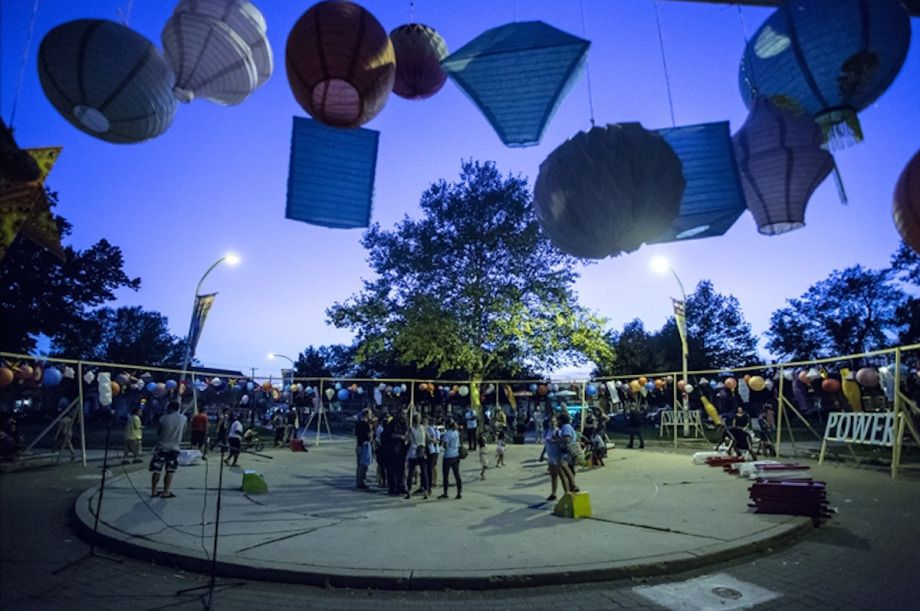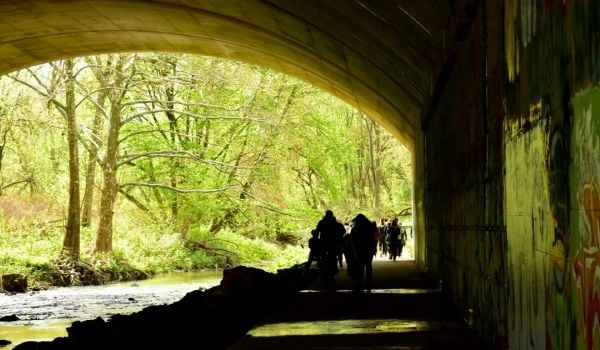Over the years, the City of Philadelphia Mural Arts Program has grown beyond its name. From our roots as the Anti-Graffiti Network and then as community mural makers, the scope of our work has expanded enormously. Now, our projects range in size and scale from the small and intimate to the large and grand—projects that straddle artistic practices from the sculptural to conceptual.
The thread that binds our projects together is our process. Our art-making empowers and engages a broad range of “authors,” including artists, community members, and young people. Broad authorship and a collaborative process that takes multiple perspectives into account are central to the identity of our program. We see ourselves in the work we do—our stories, histories, struggles, and our aspirations for change—and that is why the work has been so resilient over the past 30 years. By involving multiple authors at every stage of the process, Mural Arts projects cross boundaries, build social capital, create opportunities for engagement, and break down barriers, both evident and intangible, between the public, private, and civic sectors.
Every new work of public art we create involves a complex journey that requires an investment of time and prioritizes people. We are always striving to improve upon our processes. We were thrilled to receive a grant from The Pew Center for Arts & Heritage to work with curator Lucía Sanromán and with Cohabitation Strategies (CohStra), a nonprofit cooperative that engages radical planning processes and that focuses on relationship-building in order to activate communities and the people who live there.
After researching multiple Philadelphia neighborhoods in which to stage their project, CohStra identified a strong interest in South Philadelphia, an area which is comprised of populations that include long-settled African American and Italian communities as well as East Asian and Latino refugees and migrants, who have settled more recently. South Philly represents a microcosm of conditions that affects many multicultural communities across the United States—one that is characterized by extraordinary cultural richness thriving under persistent prejudices and social divides.
It is not surprising that CohStra, a group constituted of diverse practitioners, chose to focus its project Playgrounds for Useful Knowledge in this area. Core members Lucia Babina and Emiliano Gandolfi are Italians living in Spain, while Gabriela Rendón and Miguel Robles-Durán are Mexicans living in Brooklyn, and all are familiar with the complex process and cultural implications of migration.
The active phase of the project involved three “actions” that took place in a restored lot with a brightly painted shipping container. Playgrounds was also designed to provide South Philly residents with new tools and relationships that would sustain them beyond the life of the project, and which might provide pathways for future artistic and environmental solutions to larger concerns affecting the area.
CohStra’s approach involves four parallel tactics: cultivating social networks within a community and building an enhanced level of trust; using urban planning theory and practice to analyze the conditions of the community while looking for opportunities for dialogue; developing practical solutions for urban issues such as gentrification—in this case, by creating space for community use and social exchange; and finally, by generating art and visual imagery in the newly built spaces to help unify and empower the community.
It has been a privilege and an extraordinary learning experience. CohStra’s work is done with discipline and integrity and helps us to re-think our role in communities and the ways we gather and share knowledge in an area marked by its diversity. Playgrounds has successfully woven together a large group of partners and collaborators, many of whom have never communicated or worked together, in order to re-imagine collectively the future of their community, setting the stage for future grassroots action. We are so pleased to have been a part of this partnership, and to watch the project transform into something vibrant and unexpected.
















